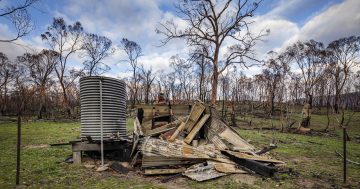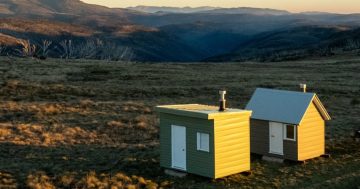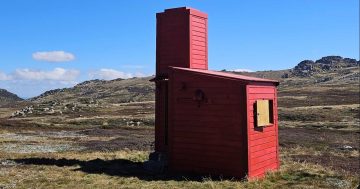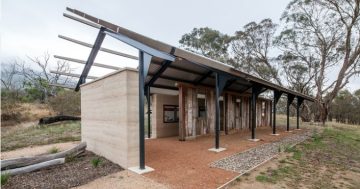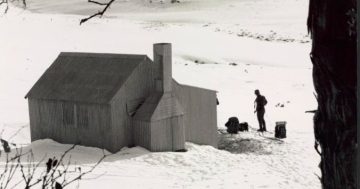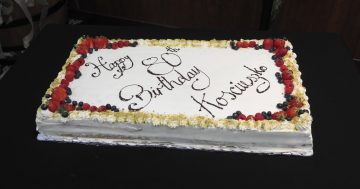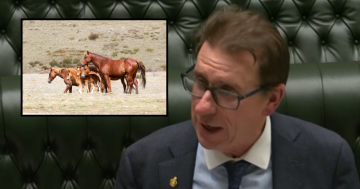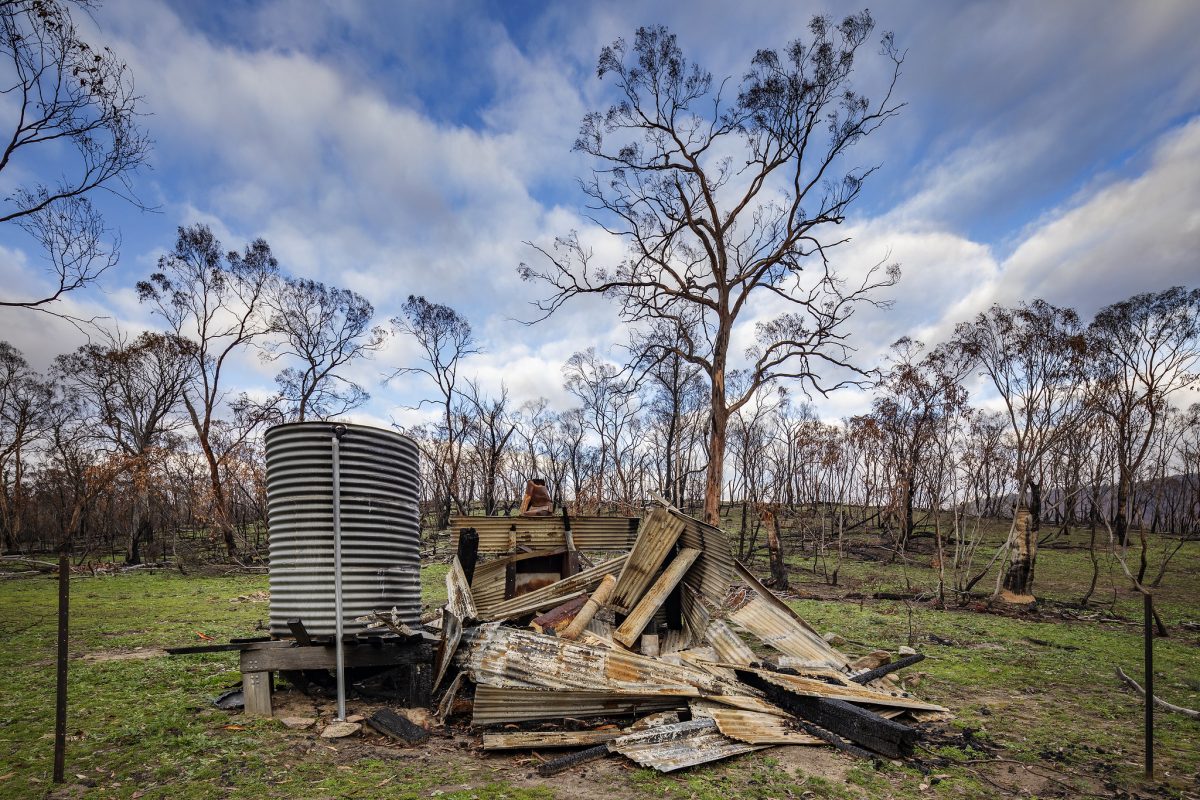
All that remains of Demandering Hut after the 2020 Orroral Valley bushfire. Photo: ACT Government.
The ACT Government has decided against rebuilding two heritage huts deep in the Namadgi National Park, years after they were destroyed by bushfire.
But the surviving family of the people who built them a century ago isn’t giving up on them yet.
Demandering Hut and Max and Bert Oldfield’s Hut are two of only 15 surviving huts and homesteads. They were key to the region’s sheep farming industry and both are included on the ACT’s Heritage Register as a “significant cultural resource to the community”.
Demandering Hut was constructed by Bill Cotter and Jack Simpson in 1860 on land owned by Jack’s great-grandfather, Garrett Cotter, after whom the Cotter region is named. It was used by graziers for decades when moving sheep through to Tantangara in today’s Kosciuszko National Park.
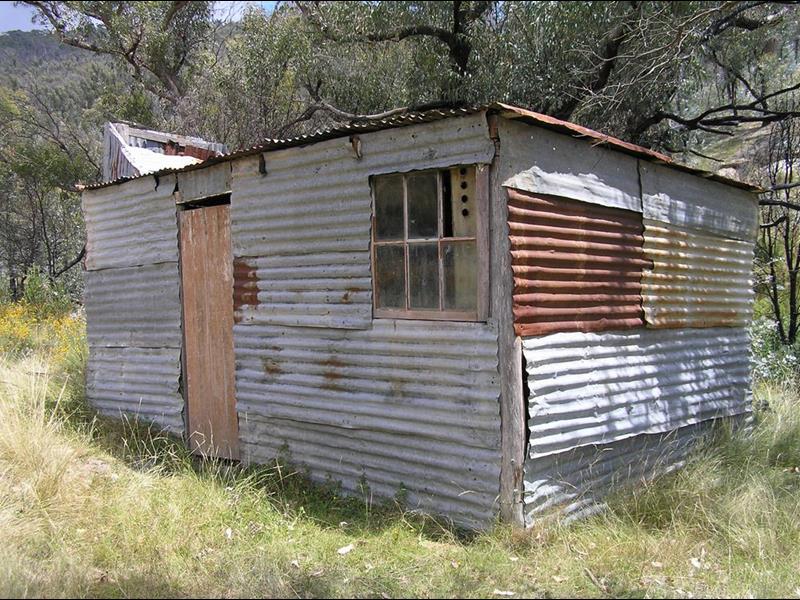
Max and Bert Oldfields Hut. Photo: Kosciuszko Huts Association (KHA).
Oldfield’s Hut was built by Max Oldfield and his cousin Bert Oldfield in 1925 for a similar purpose – a life-saving shelter from the often freezing conditions.
But both huts were turned to heaps of corrugated iron and ash by the Black Summer bushfires in 2019-20.
Initially, the ACT Government floated plans to rebuild them, and a community survey of more than 800 people returned a result of 90 per cent in favour.
The new huts wouldn’t be exact replicas, nor located on the original footprints, but the government said they would “respect the originals” and “subtly improve their location, design and construction to reduce fire risk and provide a basic level of emergency shelter for bushwalkers during inclement weather”.
Since then, NSW has rebuilt 10 of its huts in Kosciuszko National Park that were destroyed during the same fire, but there has been no movement at the ACT sites.
In an update provided to Region in late July, the ACT Government said “archaeological and heritage assessments” were still underway to “ensure the appropriate protection and remembrance of the huts is in place”.
These assessments would “document remaining significant values, archaeological features and deposits present to inform site conservation, protection and interpretation”, and be completed sometime this year.
This week, the government reached its decision – and it seems the huts will not be rising from the ashes after all.
ACT Minister for City and Government Services Tara Cheyne has decided that a “more modest approach is more appropriate” by installing new signage at both sites that “honours the history” of the huts.
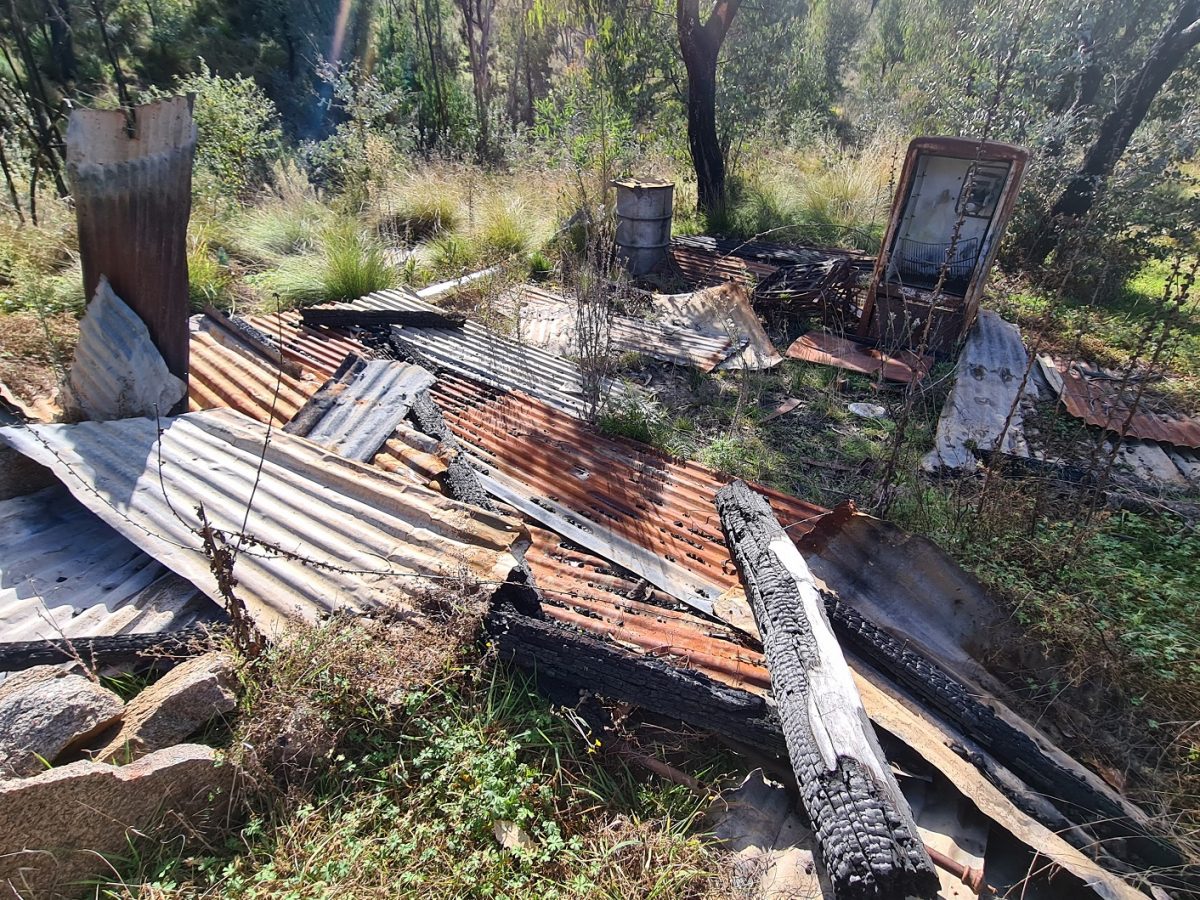
All that remains of the Max and Bert Oldfields Hut after the Orroral Valley bushfire. Photo: ACT Government.
ACT Parks and Conservation Service has also been directed to “allocate insurance funding toward maintenance of existing heritage sites, some of which pose risks due to their condition”.
“The decision not to proceed with rebuilding the huts was based on a reassessment that determined insurance funds should be prioritised to conserve other huts in Namadgi,” the ACT Government spokesperson added.
“The decision was also based on a revised risk assessment which considered the increasing maintenance needs of other huts managed by the Parks and Conservation Service (PCS) to ensure compliance with the Heritage Act.”
The Kosciusko Huts Association (KHA), which has led major restoration efforts to several of the ACT’s heritage huts, chiefly Waterhole Hut, is “deeply disappointed” by the decision.
“When the new minister took over, we did what we believed was the right thing to do and sent her a letter asking her to confirm the huts were still going to be rebuilt, and we got a response from her indicating yes, they would,” KHA president Pip Brown told Region.
“So we relaxed, stupidly.”
Ms Brown says the KHA won’t give up on the huts yet, and says the surviving family members of the hut’s original builders – including Max Oldfield himself, currently living in Young – certainly won’t either.
“They’re part of the social history in the ACT, built by graziers and settlers wanting to bring their cattle up and their sheep,” she says.
“There were originally seven listed stockmen’s huts in the ACT – one was burnt down years ago and not replaced, and now these two have been burnt down and won’t be replaced. So we’ve now only got four left, and over the years, unless something changes, there’ll end up being none.”












